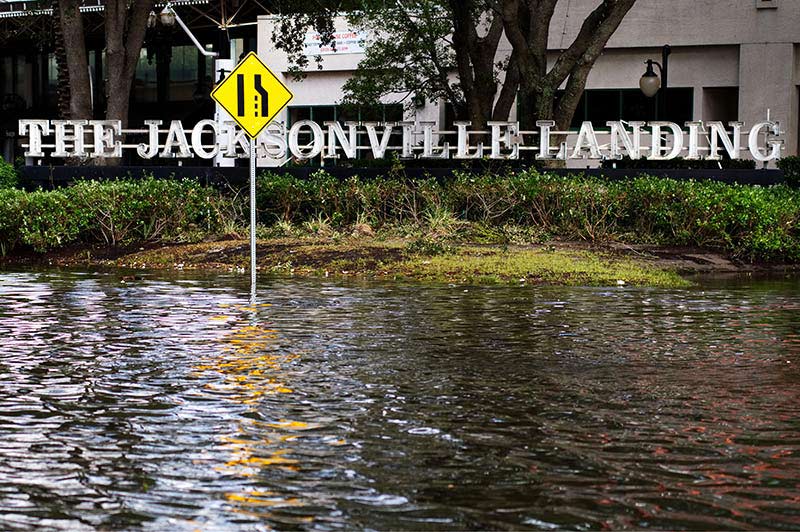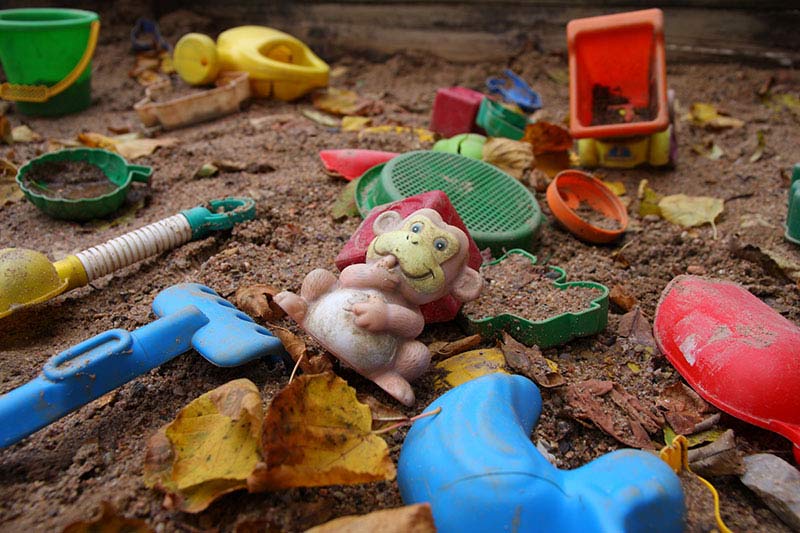Regional Report: Mosquitoes in Florida and the Southeast
As visitors and residents of the Southeast know, the climate and ecology of this U.S. region create optimal conditions for mosquitoes and the problems they bring. Native and exotic mosquito species are well established throughout the Southeast, and extensive international travel in and out of the region amplifies the risk of disease being introduced or reintroduced to these waiting species. Florida is often at the center of the region's mosquito concerns.
To explain more about the impact and control of mosquitoes in Florida and the Southeast, we spoke with mosquito expert Dr. Jonathan Day, professor of Medical Entomology at the University of Florida's Florida Medical Entomology Laboratory (FMEL). Located on the state's subtropical Atlantic coast, FMEL is one of the world's largest institutions devoted to research, training and education regarding biting insects and the diseases they carry.
Dr. Day spoke with us in late November 2017, less than three months after Hurricane Irma struck Florida and the Southeast. This interview is one of six special reports with regional mosquito experts available on the AMDRO.com website.
AMDRO: What is the primary focus of your work at the Florida Medical Entomology Laboratory?
Day: We focus on mosquito-borne viruses, mainly West Nile virus, but we also work with St. Louis encephalitis virus and Eastern equine encephalitis. Of course, we have interest in any introduced viruses like Zika or chikungunya or dengue. We're also interested in malaria.The main aspect of our research is to look at different transmission patterns and try to predict the risk of human disease in different areas of Florida and the Southeast. We focus on environmental factors that drive mosquito populations, mainly temperature and rainfall. We focus on the mosquito vectors, which differ depending on what disease we're talking about. Then we finally focus on amplification hosts [which amplify disease transmission].
In the case of West Nile, St. Louis and Eastern, wild birds serve as the amplification hosts. The populations of wild birds in any given year are really important for those viruses. For malaria, chikungunya, Zika and dengue, humans serve as the amplification hosts. Certain aspects of human populations determine whether these viruses — or in the case of malaria, a protozoan disease — become high risk for transmission in Florida.
AMDRO: Except for a few cases, all local U.S. transmissions of Zika virus have occurred in Florida. What are your leading concerns for the region?
Day: I think No. 1 is West Nile. That's because West Nile is clearly endemic in the area. That means that it cycles year in and year out. West Nile has become an established virus in the Southeast. Similar to that, St. Louis encephalitis and Eastern equine encephalitis viruses are also endemic. They are established, they cycle, and there's evidence of transmission every single year. Whether they end up as a severe human outbreak depends entirely on the reproductive rate of the mosquito vector and the reproductive rate of the avian amplification hosts, and what kind of nesting season the amplification hosts have. So those three are the ones that are of most concern.
Zika, dengue and chikungunya are not endemic; they get reintroduced. Usually they're reintroduced by an infected human that comes into the area, is exposed to mosquitoes, and mosquitoes pick up the virus. Then the mosquitoes become infected and transmit. There are places in the world where dengue and chikungunya and Zika are endemic. Puerto Rico, for example, has all three. The viruses are there constantly. But in the U.S., they have to be reintroduced.
Last year, when Zika really had a huge impact in northern South America and the Caribbean, there was a lot of virus being introduced into the Southeast by infected people who traveled to a zone like Puerto Rico, were infected, and brought the virus back to the states. But once we go through a mosquito season with those viruses, usually those viruses die out, and have to be reintroduced. So, they are of far less concern than those viruses that are endemic and we know are cycling in the area. Malaria is the same thing. Periodically you have infected people that pick up malaria traveling, bring malaria back, and have a mosquito exposure where they infect local mosquitoes. Then you have locally acquired malaria transmission.
With all four of those diseases — malaria, chikungunya, dengue, and Zika — it's pretty rare in Florida and in the Southeast to have a situation where you get locally acquired virus. In fact, last year the Zika transmission was very focal in South Beach Miami and the Wynwood neighborhood of Miami. Once we got into the dry season and the mosquito populations dropped down, then the locally acquired Zika disappeared, and we haven't seen a resurgence of it this year.

Torrential hurricane rains often wash mosquito larvae out into the ocean.
AMDRO: How do major weather events, such as Hurricane Irma, affect Florida's mosquito season and mosquito populations?
Day: There's a pretty clearly defined mosquito season. Because rainfall is so important, the mosquito season cycles with the subtropical wet season in Florida. Our season is May through November, but if the rainfall patterns vary dramatically in a year, then that may be extended or curtailed. We normally see the mosquito populations drop pretty dramatically in November, because the dry season usually begins at the beginning of November. But this year it has been a very wet fall and it's been pretty warm, so the season has extended. Once we get into December, into the real dry season, then the mosquitoes take a pretty good hit.
Typically, big events like tropical storms and hurricanes where there is a lot of rainfall reduce mosquito populations because local habitats are flooded. For a tropical event, you can have anywhere from nine to 25 inches of rain. There's a lot of moving water that carries mosquito larvae out to the Intercoastal [Waterway] and out into the ocean. So, big rainfall events usually associated with hurricanes or tropical depressions and tropical storms tend to impact mosquito populations adversely.
Usually after a rainfall event, we see that areas will dry down very quickly, but now they're not. The water table depth in South Florida is usually about one and a half meters below the surface. Because it has been so wet this year, the water table has come up to probably closer to half a meter. That means that even with a relatively small rainfall event, we'll flood because the water table is so high. We tend now to get more standing water later in the year than we would during a regular year. We really have seen that areas that are usually totally dry this time of year are holding water because the water table has come up.
AMDRO: What does that mean for next year's mosquito season in the region?
Day: It'll all depend on what that water table does. We've gone from a very wet summer and fall, and we've seen in Florida before where that can just turn around and we can have an exceptionally dry season. That tends to even things out.
If the wet season is a little bit wetter than normal, then that water table will stay high and the possibility of getting an earlier mosquito season next spring is definitely there. Right now, it's definitely possible that we will have an unusually high mosquito population in the spring, when it's normally much drier. It all depends on what happens with rainfall over the next four months.

Recognizing mosquito larvae in containers is important to mosquito control.
AMDRO: Regarding control, what are the most important steps residents of the region should take?
Day: Mosquitoes in this area fall into two categories. One is the nuisance mosquitoes, and those are mosquitoes that don't really have an associated disease risk. They're mosquitoes that just bite and drive people crazy. Then there are the vector mosquitoes, the mosquitoes that are infected with a pathogen. You know, dog heartworm is transmitted by mosquitoes. So even though there may be no risk of human disease with mosquitoes, there's a risk of pets being infected by mosquitoes.
So, the way you deal with those two different populations, the vector where there is a disease risk associated with them and the nuisance, is pretty much the same for people. They want to reduce the larval habitats that are producing mosquitoes around their home or in their neighborhood.
Sometimes it's really hard for people to find where these mosquitoes are breeding and developing, but control of those areas by the homeowner is really important. Finding half-buried kid toys that are holding water, or anything that's holding water. Sometimes it's very difficult to find exactly where those breeding sites are, but that is what people need to do. They need to find breeding sources and get rid of them.
AMDRO: The Centers for Disease Control and Prevention (CDC) and FMEL advise to treat mosquito larvae and mosquito adults. How do those two steps work together?
Day: The larval treatment is by far the most important. If the adult mosquitoes are mosquitoes that do not travel very far from their larval habitat, then adult treatment can be effective. However, if you're dealing with mosquitoes that fly long distances and travel long distances from their breeding habitat, then adult control becomes less effective [for long-term control].
For example, the mosquito that transmits West Nile virus in Florida is a mosquito that disperses great distances as adults. You may have a larval breeding site that is five miles or 10 miles from your house. Those mosquitoes tend to disperse upwind, night after night. If there's a prevailing wind, you can have mosquitoes coming into your yard that originated ten miles away. That means that in order to control adults, you'll have to spray every night. If the mosquito is locally produced – and by locally, I mean within the confines of your yard – then spraying adults will be helpful.

Recognizing mosquito larvae in containers is important to mosquito control.
AMDRO: What more can people do to help control mosquitoes and mosquito-borne diseases?
Day: Source reduction is by far the most important — getting rid of larval habitats. Learn to recognize larval mosquitoes when you see them in a container. Control areas where you know there are breeding mosquitoes.
In terms of mosquito-borne diseases, I think the real important thing is that people have an understanding of true risk. Last year, Zika was all over the national news. A lot of people got the impression that there was risk of local transmission no matter where they lived in the U.S., when in fact the only area of risk for local transmission in the U.S. was Miami.
I think people need to be aware of the local media if there is a risk of West Nile outbreak. West Nile is one of those viruses where you can have an outbreak virtually any place in the continental U.S. Following press releases from local public health units and local mosquito control units will give people a better idea of what the real risk is in their area.
Conclusion
By learning more about the risks mosquitoes present, you can take steps to protect your family against established and emerging mosquito threats. The Amdro® brand is committed to providing you with timely, expert information regarding mosquitoes, mosquito-borne diseases and effective mosquito control. With Amdro, you can get the knowledge you need, when you need it, and premium pest control products to help you prevent and control mosquitoes in your region.
This interview was edited for length and clarity.
Amdro is a registered trademark of Central Garden & Pet Company.




